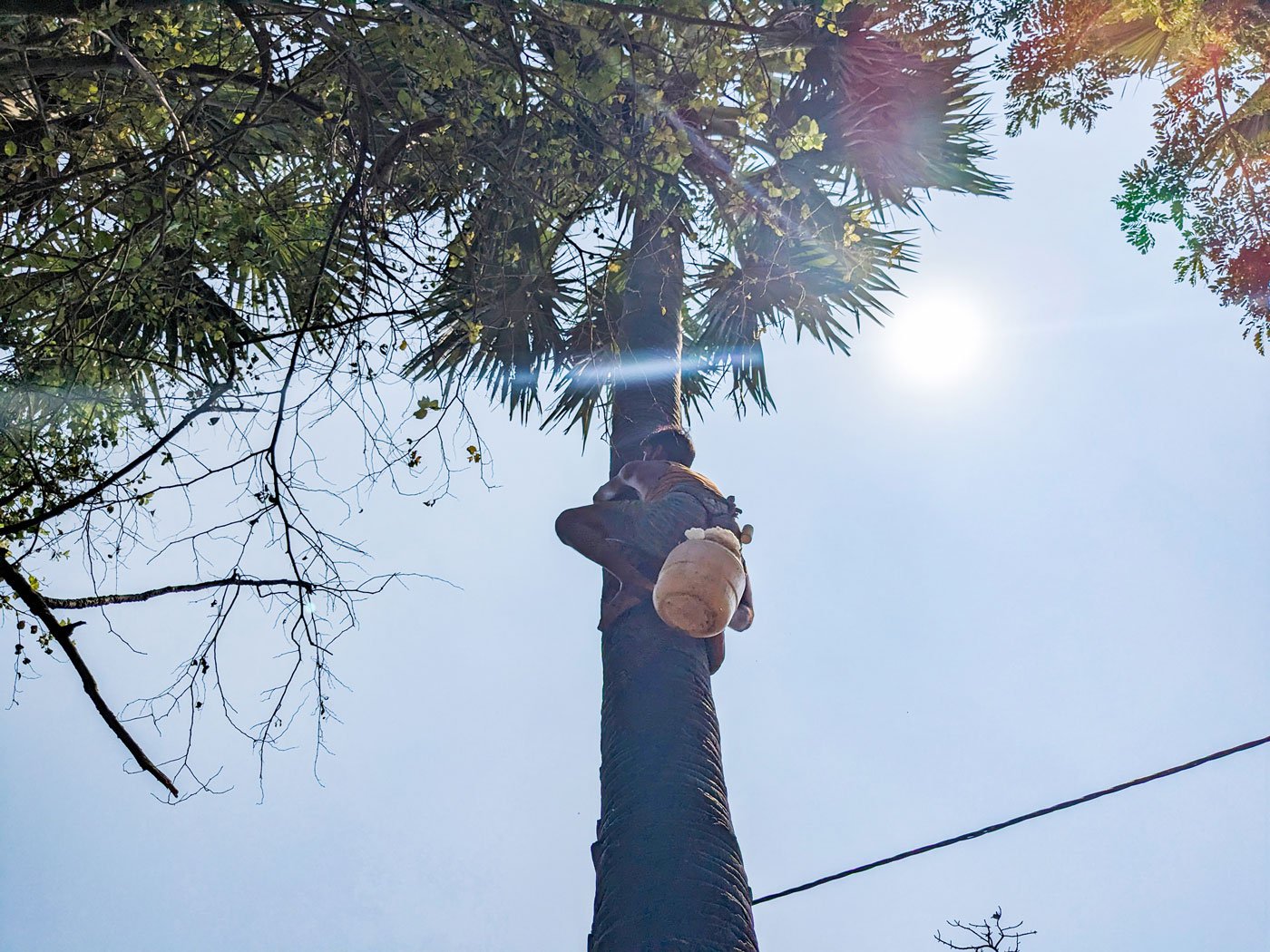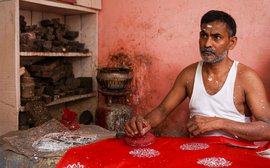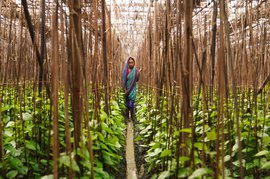A striped lungi tucked between his knees, Ajay Mahato can shoot halfway up a 40 feet palm tree in just 30 seconds.
He does this everyday – climbs dizzying heights to the top of palm trees and collects sap from their buds near the fronds.
The 27-year-old toddy tapper is preparing to climb on a sunny May morning in Bihar’s Samastipur district. “
Aab ta taad ke per jaisaan sakkat ho
gelaihan. Kanta bhi naya bhokaitai
[These have now become as hard as a palm
tree. Even a thorn can’t pierce them anymore],” Ajay says, pointing to the
calluses on both his hands.
“While
climbing, the grip on the tree has to be strong. The trunk has to be clutched
with both hands and feet,” Ajay says, demonstrating how the fingers have to be
intertwined and wrapped around the trunk. This arduous work of climbing the
thin and rugged trunks of palm trees has left dark marks on his chest, hands
and ankles.
“ 15 saal ke rahiya tahiye se start ka deliyai ra [I started climbing palm trees when I was 15 years old],” says the toddy tapper, who has been doing this for 12 years now.
A resident of Rasulpur village, Ajay belongs to the Pasi community who have traditionally worked as toddy tappers – including at least three generations of Ajay’s family.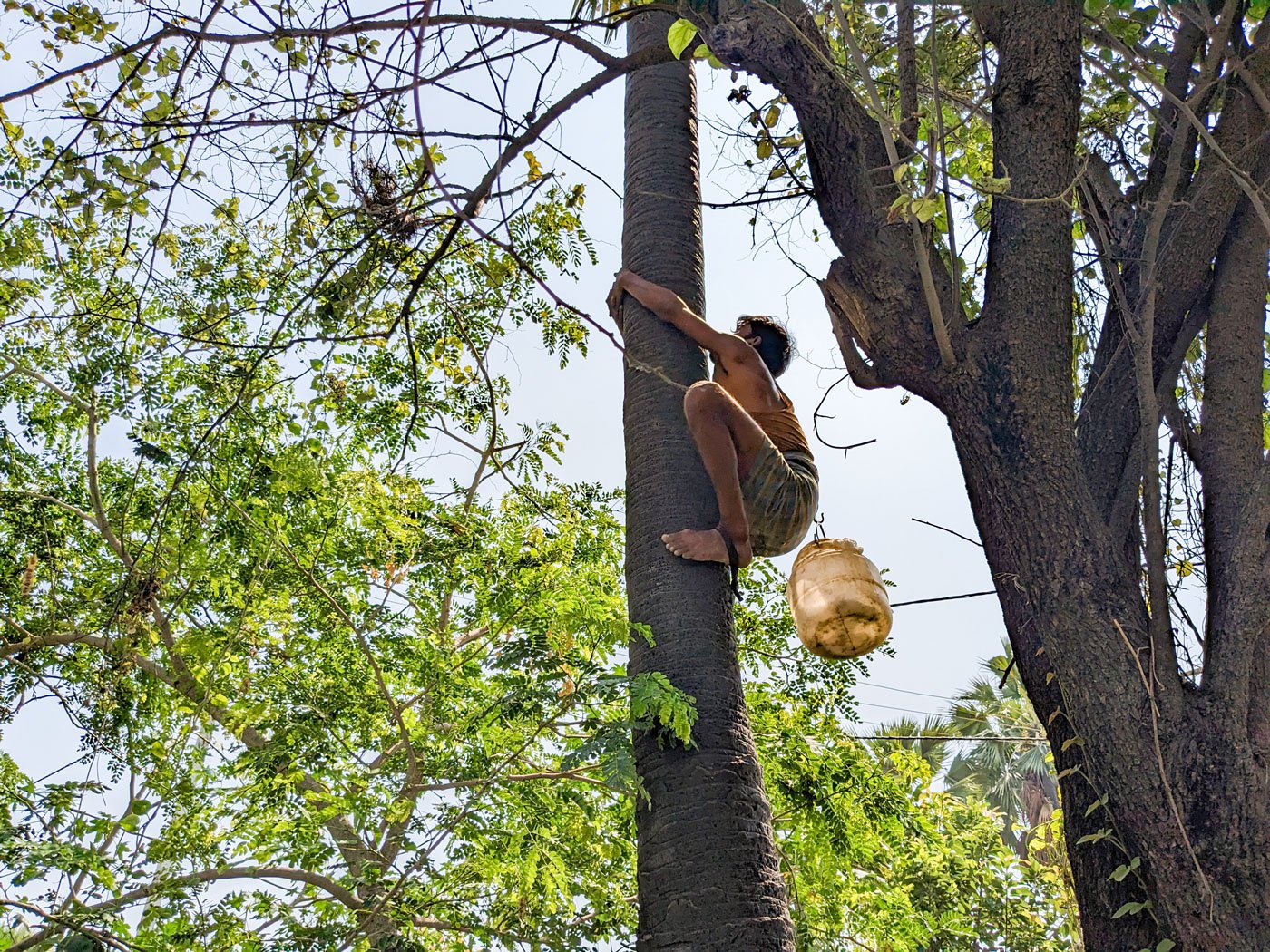
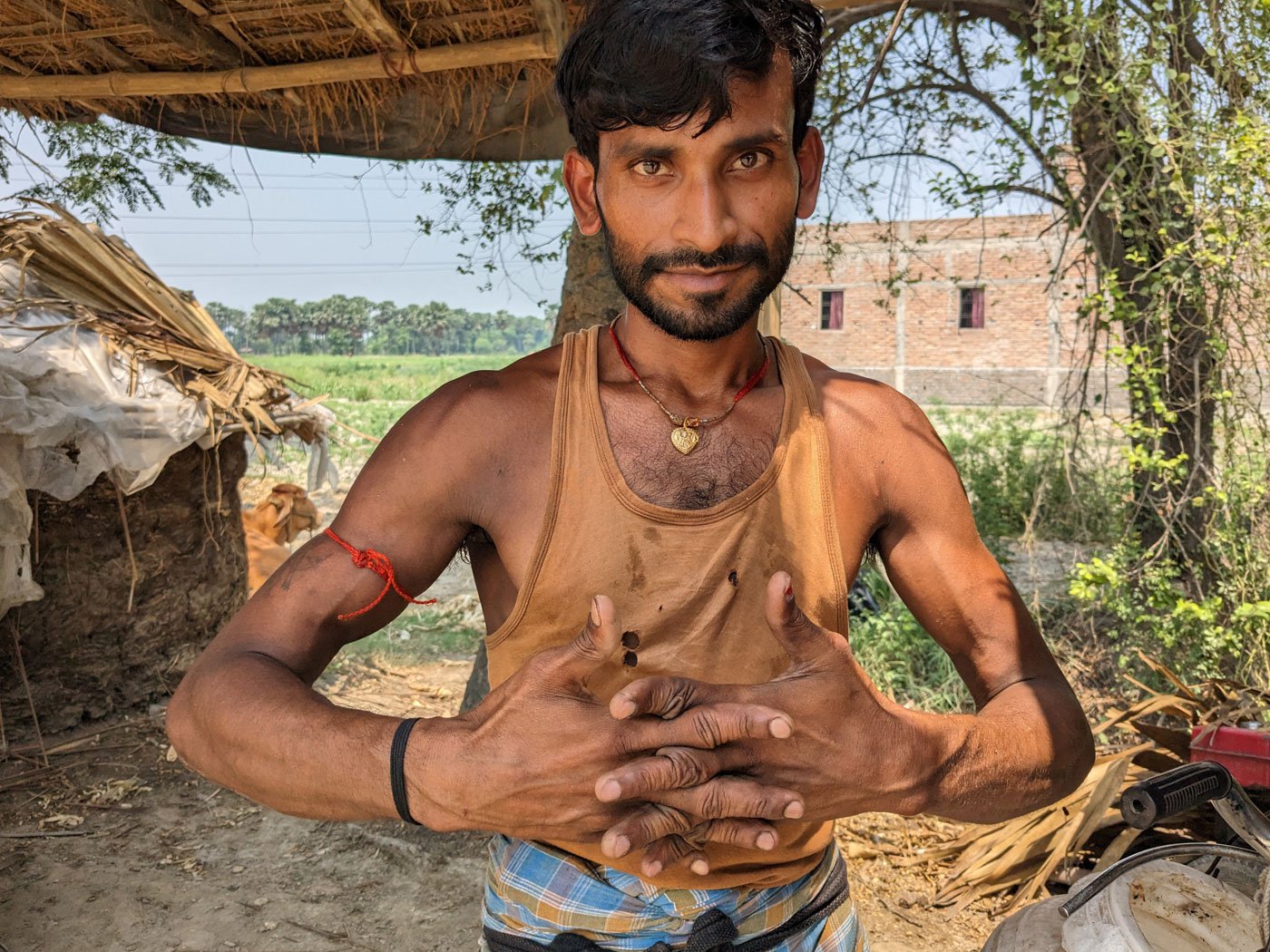
Ajay climbing a palm tree with a pakasi – a black leather or rexine strap, stretched between his feet. He demonstrates (right) how he grabs the trunk of the tree with his fingers intertwined
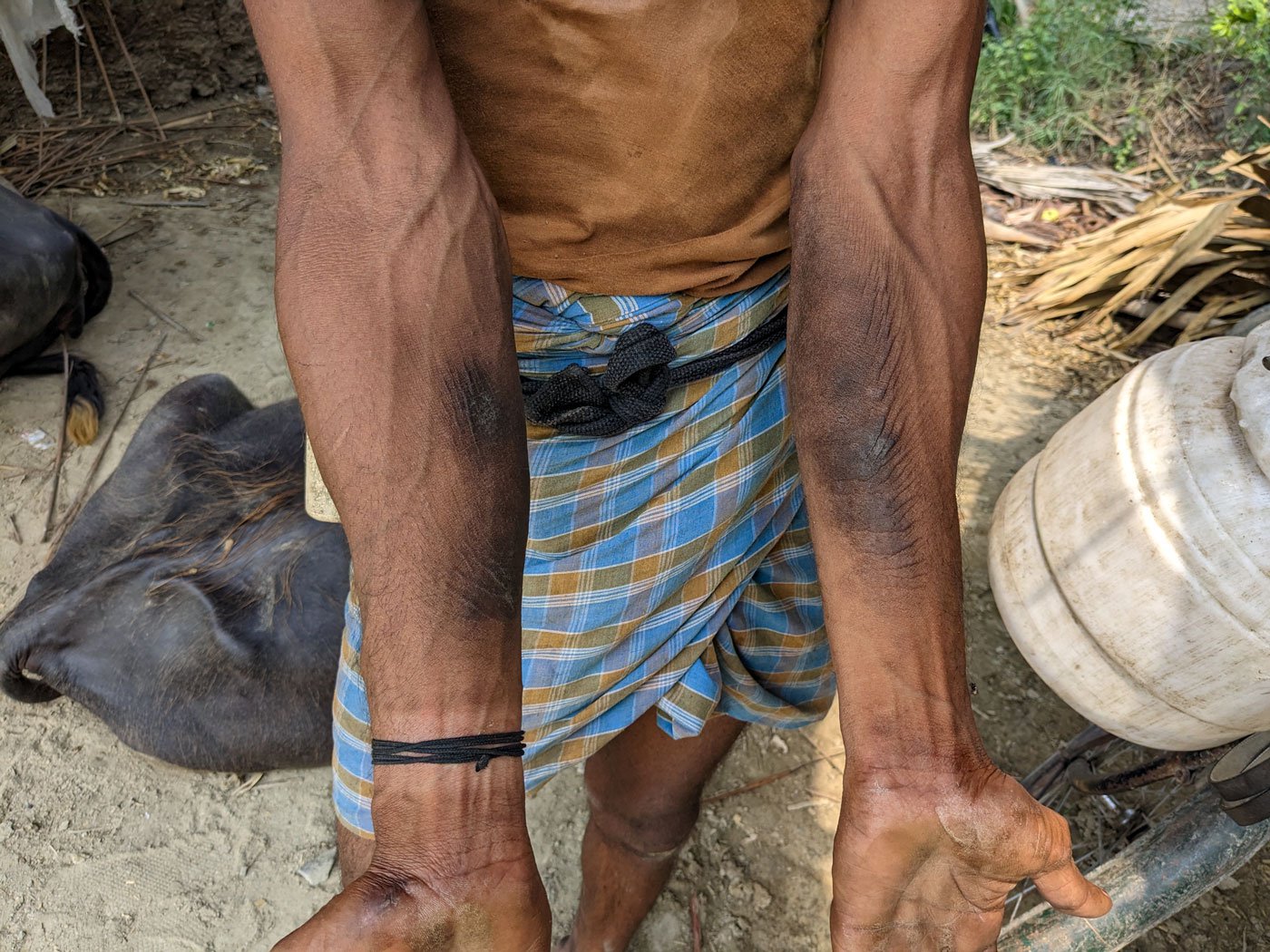
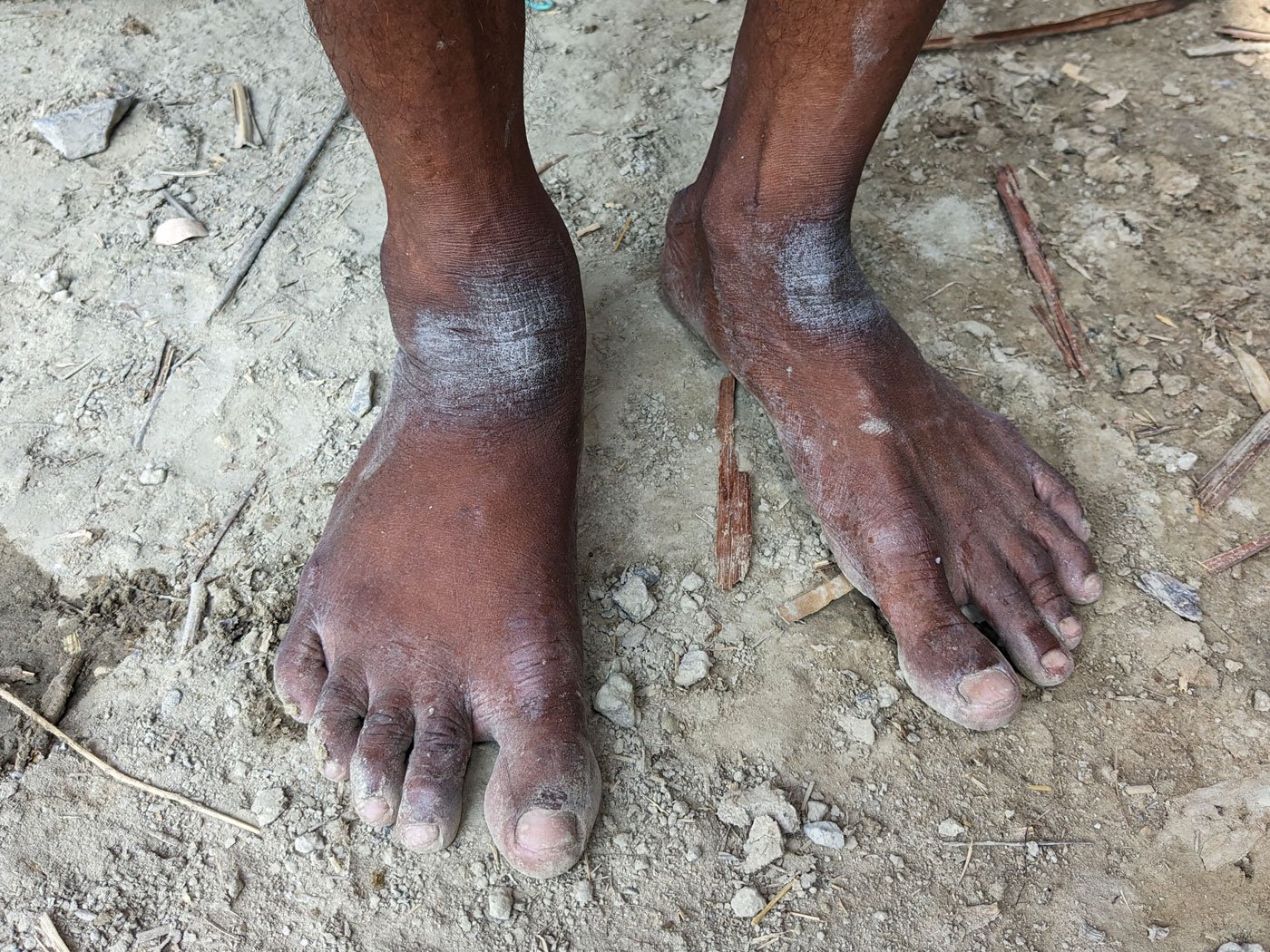
Years of climbing the rugged trunk of palm trees have left dark calluses on his hands and feet
“Initially,
I used to climb halfway up the tree and get down,” he recounts, adding that his
father would encourage him to learn the skill when he was young. “When I would
look down from the top of the palm tree then, I felt my heart would fail.”
“The
first time I climbed a palm tree, my chest, hands and feet started to bleed.
The skin in these parts gradually hardened,” says Ajay, explaining the wounds
on his muscled limbs which chafe against the trunk as he journeys up and down.
Ajay
averages five palm trees in the morning and five in the evening, with a break
around midday to avoid the afternoon heat. He has leased 10 trees in Rasulpur
and pays the landowner Rs. 500 a year for each tree or an equivalent amount of
palm sap.
“
Baisakh (April-June) mein ego taad se 10
bottle tadi niklaichhai. Okra baad kam hoi lagai chhai
. [During Baisakh, a single
tree yields 10 bottles of sap. After this peak season, the yield starts to
decrease],” says the toddy tapper.
Ajay climbs five palm trees in the morning and five in the evening, with a break around midday only to avoid the afternoon heat
During the off-season, Ajay manages to sell the sap to his local customers directly from home at the rate of Rs. 20 a bottle. His wife and three children rely on the income he earns from this work.
Samastipur is one of the leading districts in
India that contribute to male inter-state out-migration. Preferring to stay on in Samastipur and practise toddy-tapping, Ajay goes against the trend around
him.
*****
Before
he climbs, Ajay fixes a
darbas
(nylon
belt) tightly around his waist. An iron
akura
(hook) hangs from the
darbas
,
along with a plastic jar and a
hansua
(sickle).
“The
darbas
has to be tied so
securely that even with 10 litres of sap it won’t budge,” Ajay explains.
He
climbs the palm tree, at least 40 feet high and as he reaches the slippery top
half of the trunk, I see him strengthen his grip with a
pakasi
– a leather or rexine strap which he stretches between his
feet.
The previous evening, Ajay had already carved an
incision and fixed an empty
labani
(earthen pot) at the bud of the tree. Twelve hours later, Ajay climbs the tree
again to transfer roughly five litres of sap collected in the
labani
. The lower end of this container,
he tells me later, has to be laced with insecticide to keep bees, ants and
hornets away.
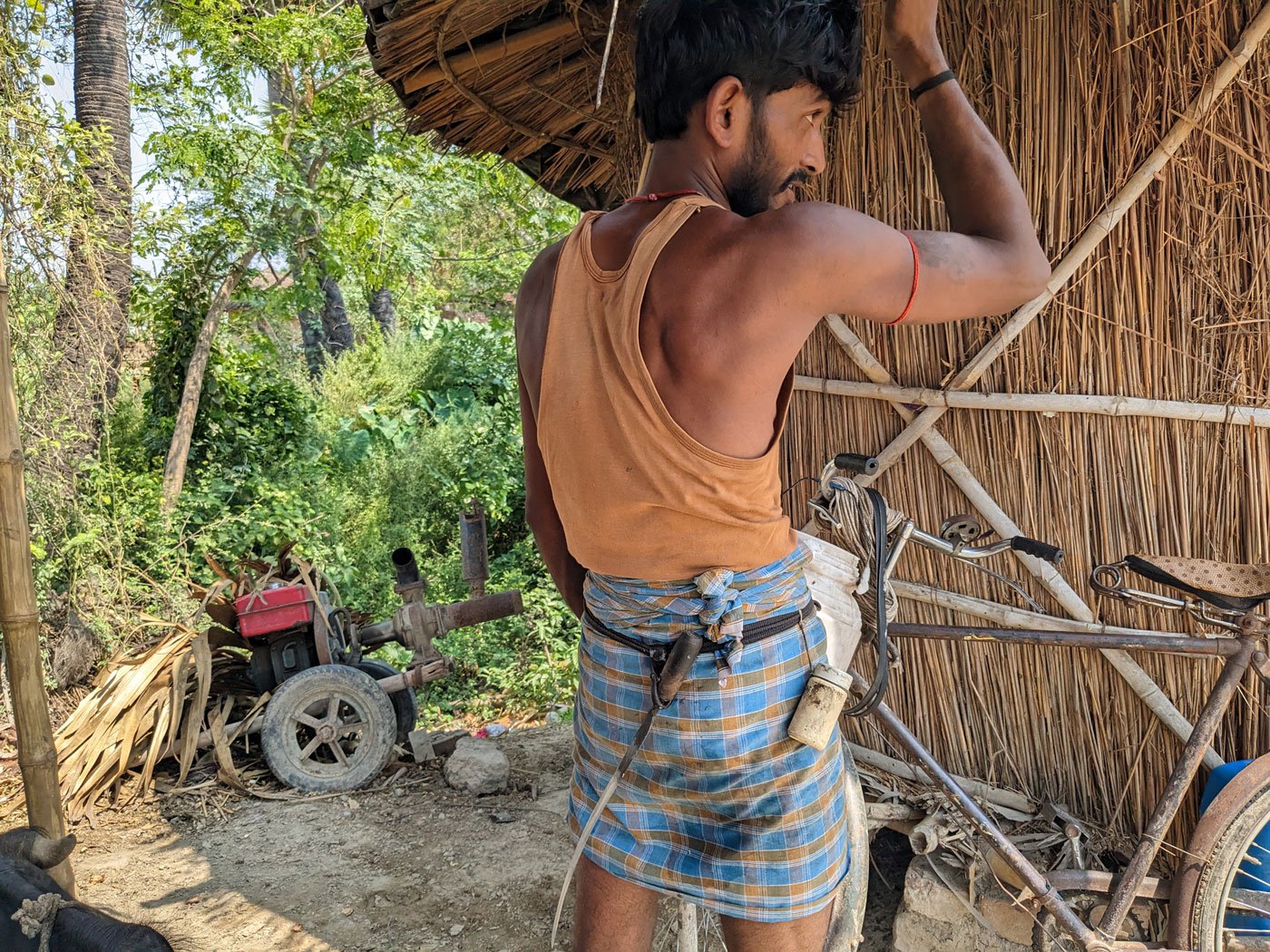
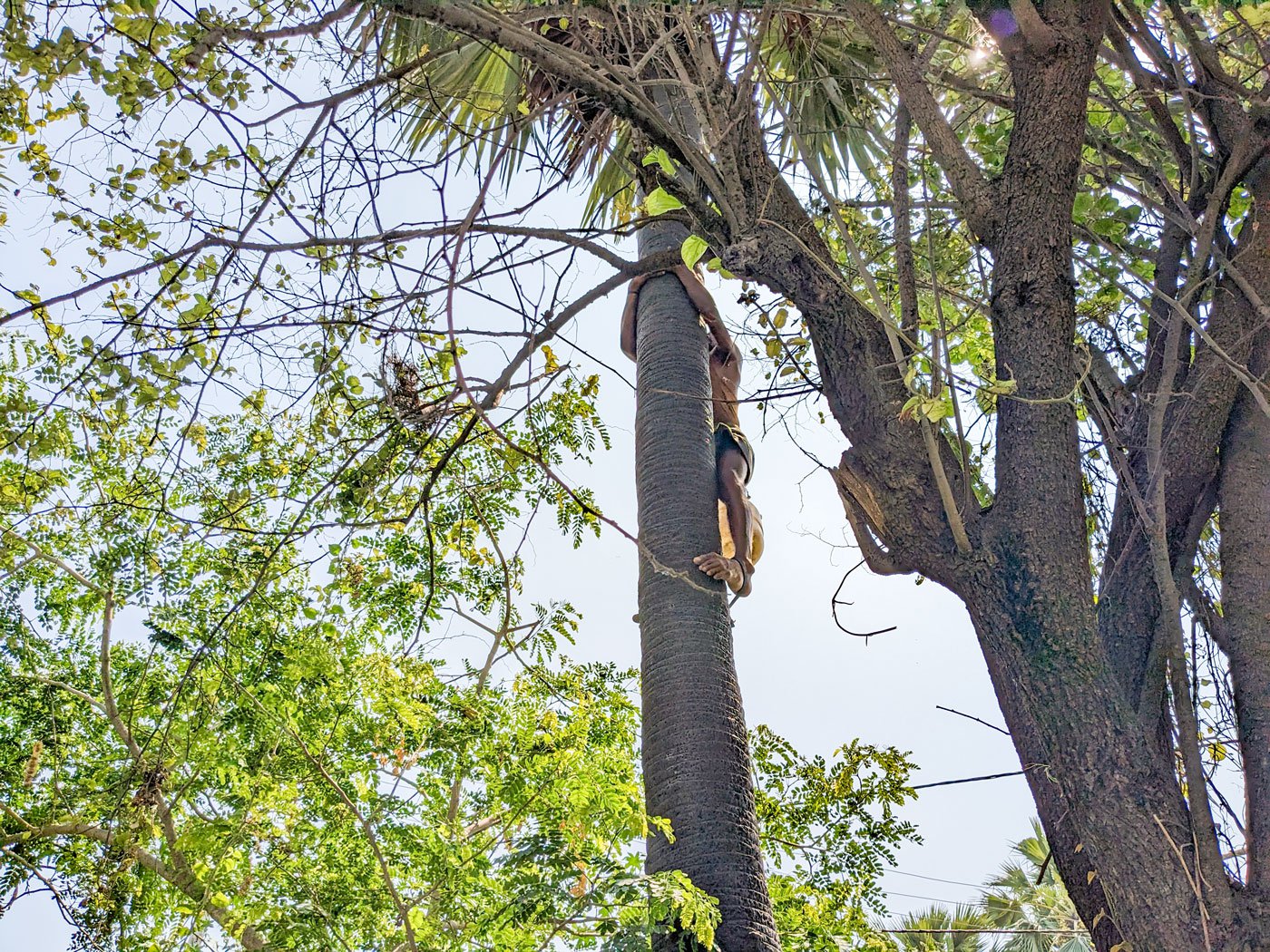
Left: Preparing to climb, Ajay ties a darbas (a belt-like strip) very tightly around his waist. " The darbas has to be tied so securely that even with 10 litres of sap it won’t budge,” he explains. Right: Climbing a palm tree in Rasulpur, Samastipur district
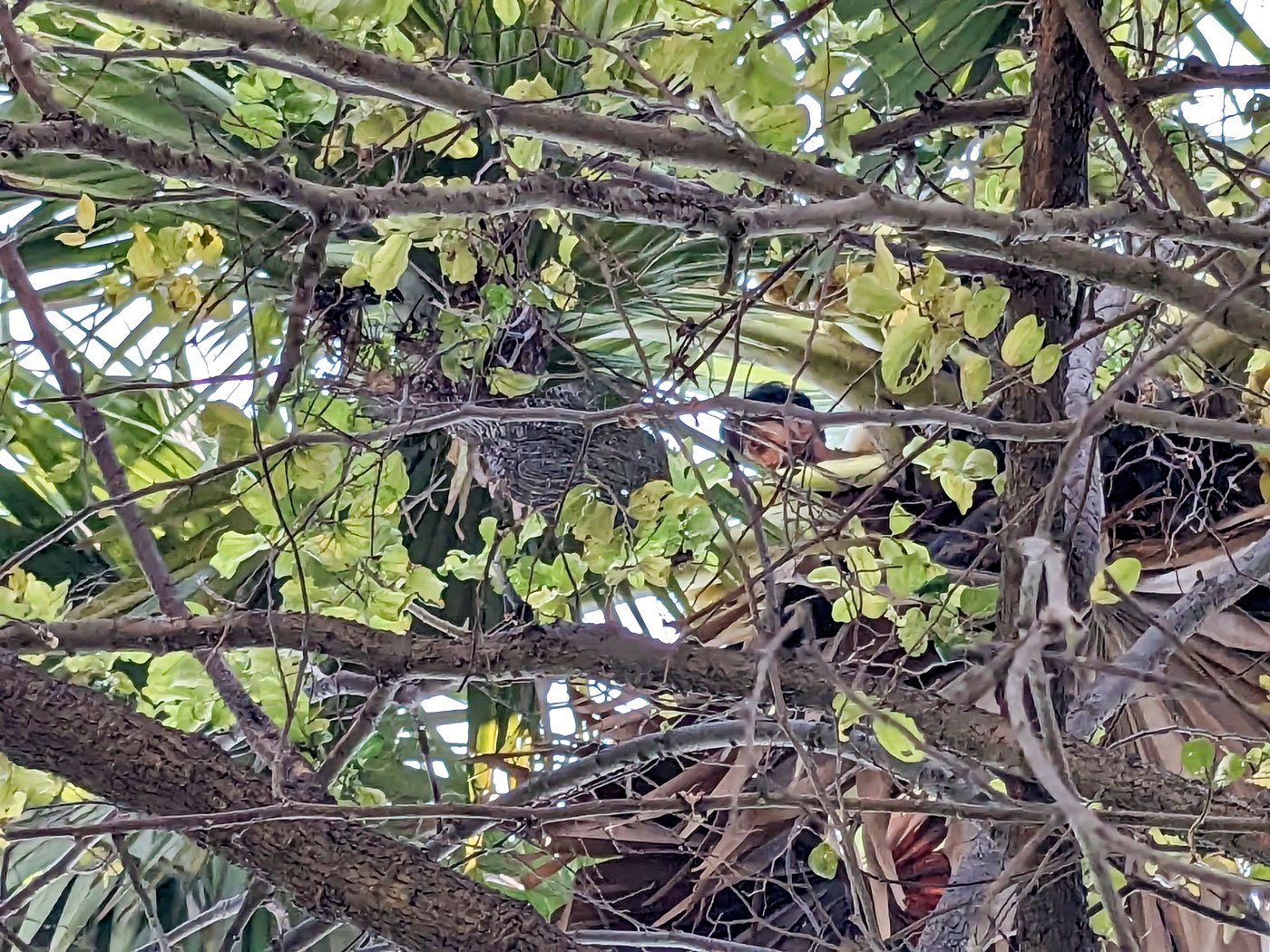
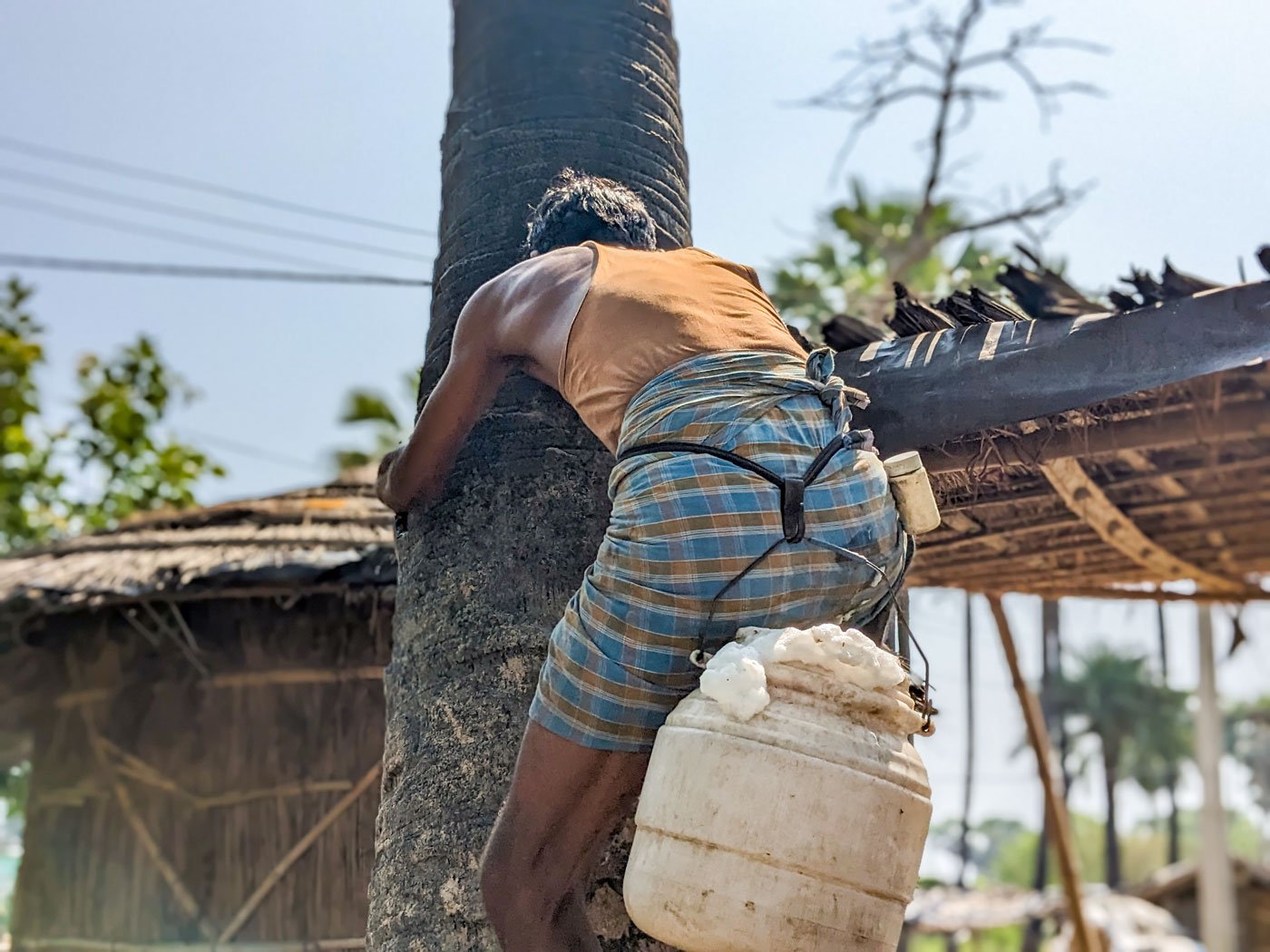
Left: Ajay extracting sap from the topmost fronds of the palm tree. Right: He descends with the sap he has collected in a plastic jar . During the peak season, a single palm tree yields more than 10 bottles of sap
Perched
precariously among the topmost fronds, Ajay makes a fresh cut on the palm bud
with a sickle. Placing the emptied
labani
there, he descends. The entire exercise is carried out in 10 minutes.
The
sap will thicken and turn sour with time, so Ajay advises me, “
taad ke taadi ko ped ke pass hi pee jana
chahiye, tab hi fayda hota hai
[Toddy is best consumed near the palm tree
it is extracted from. Only then is it beneficial].”
Toddy
tapping is a livelihood fraught with risks – a slight imbalance and the fall
can be fatal, or cause permanent debilitation.
Ajay
was injured in March, “my hand slipped from the trunk of a palm and I fell. My
wrist was damaged”. He had to stop climbing for nearly a month after that.
Earlier this year, Ajay’s cousin, also a toddy tapper, broke bones in his waist
and legs after falling from a palm tree.
Ajay scales up another palm and throws down some fruits of the tree – ice apples. He peels the tough outer skin of the fruit with a sickle and offers me a piece of the fleshy inside.
“ Lijiye, taza-taza phal khaiye . Shahar mein to 15 rupaye mein ek ankh milta hoga [Here, eat some fresh fruits. In cities, this one part is sold for 15 rupees],” he says, smiling.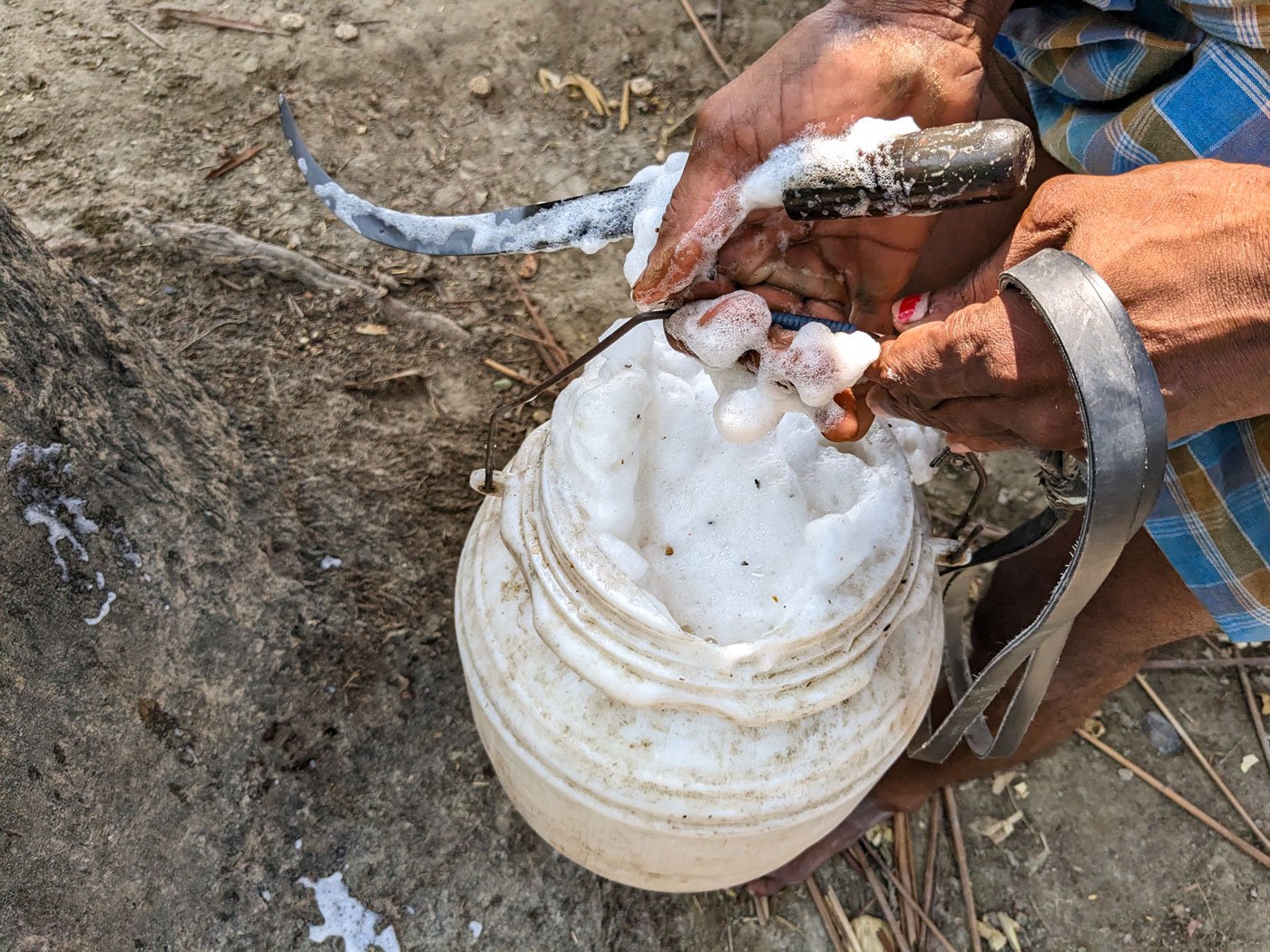
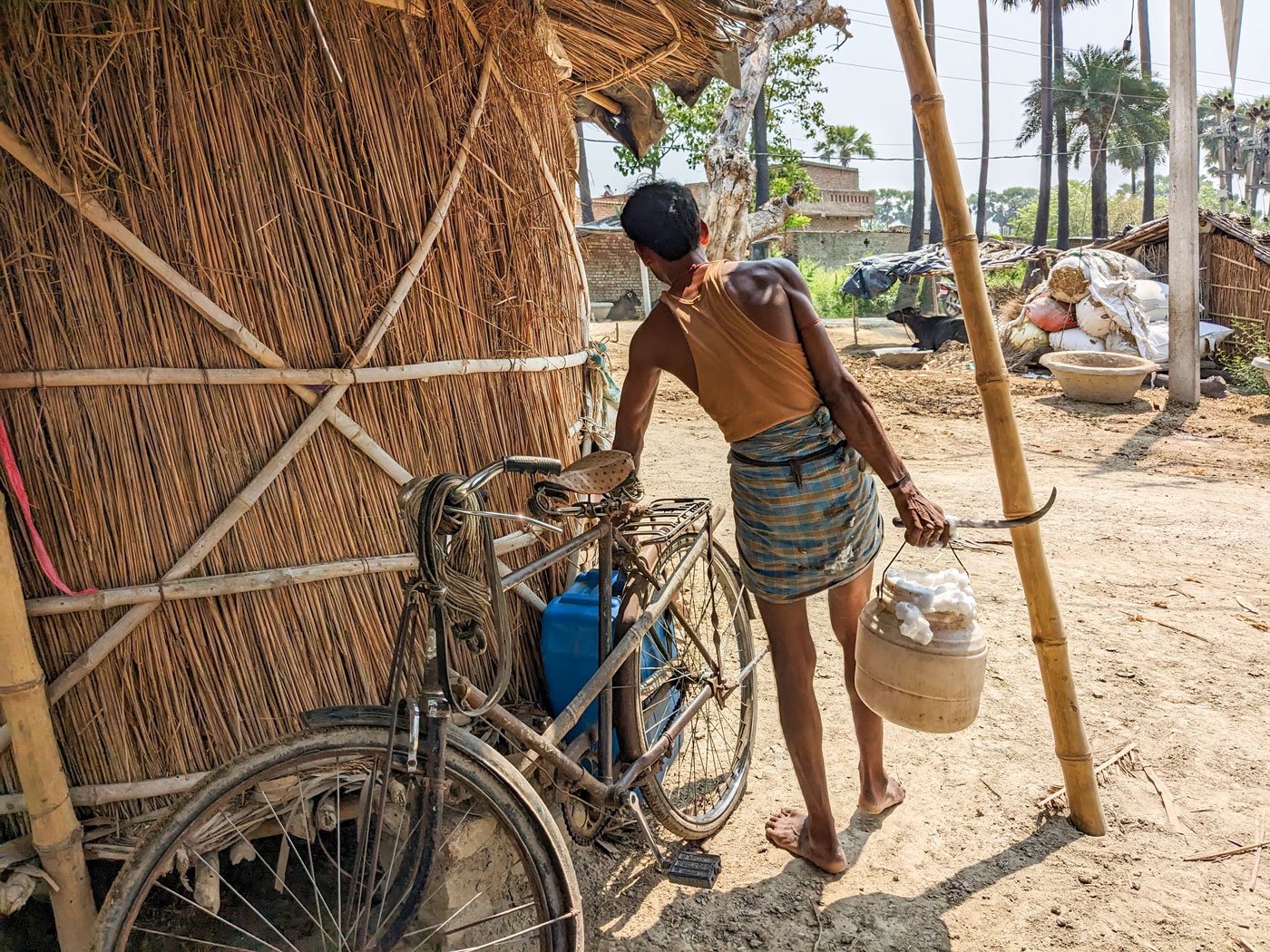
Ajay will transfer the fresh toddy which has a lather of white foam to a bigger plastic jar fixed to his bicycle
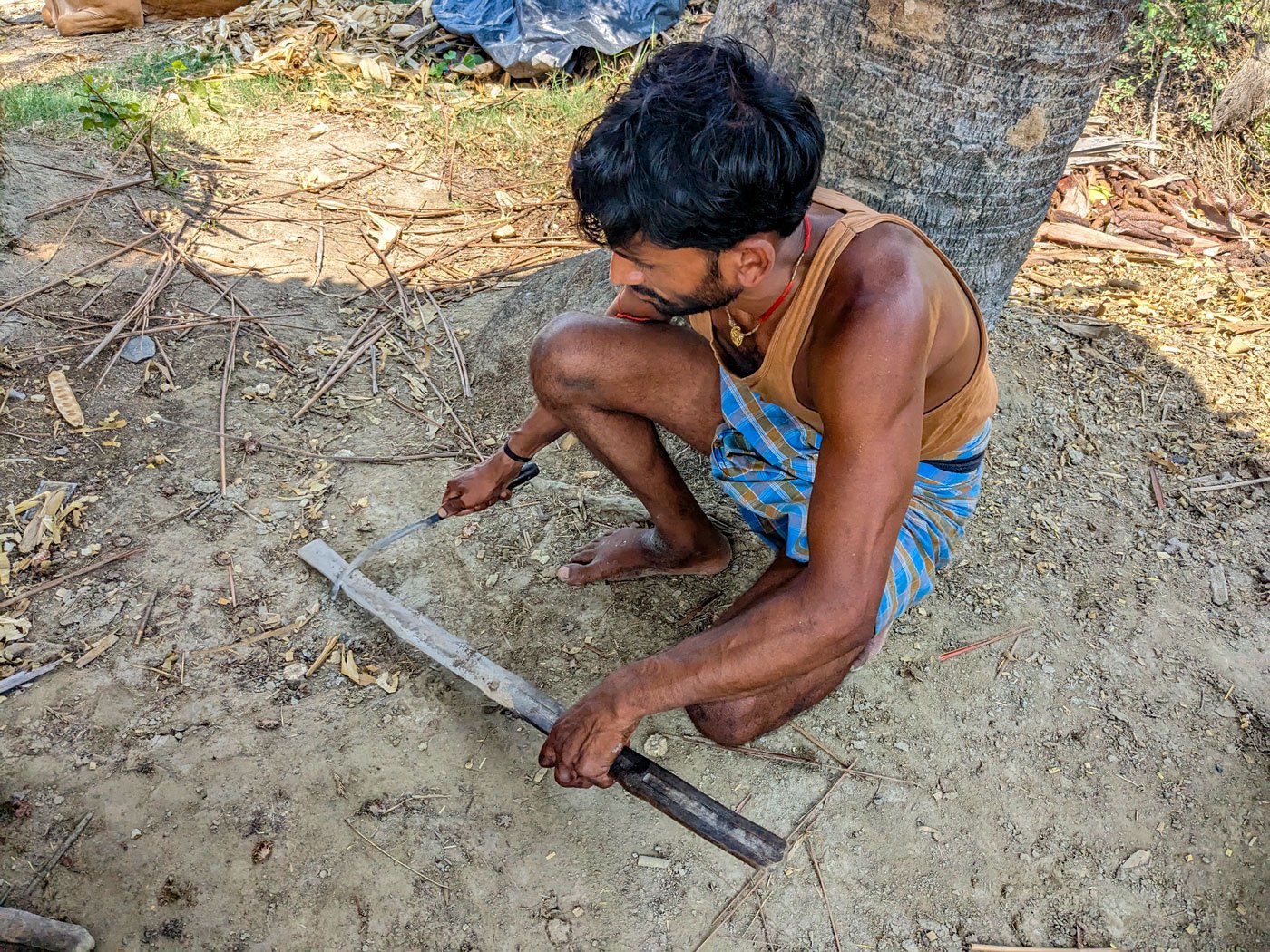
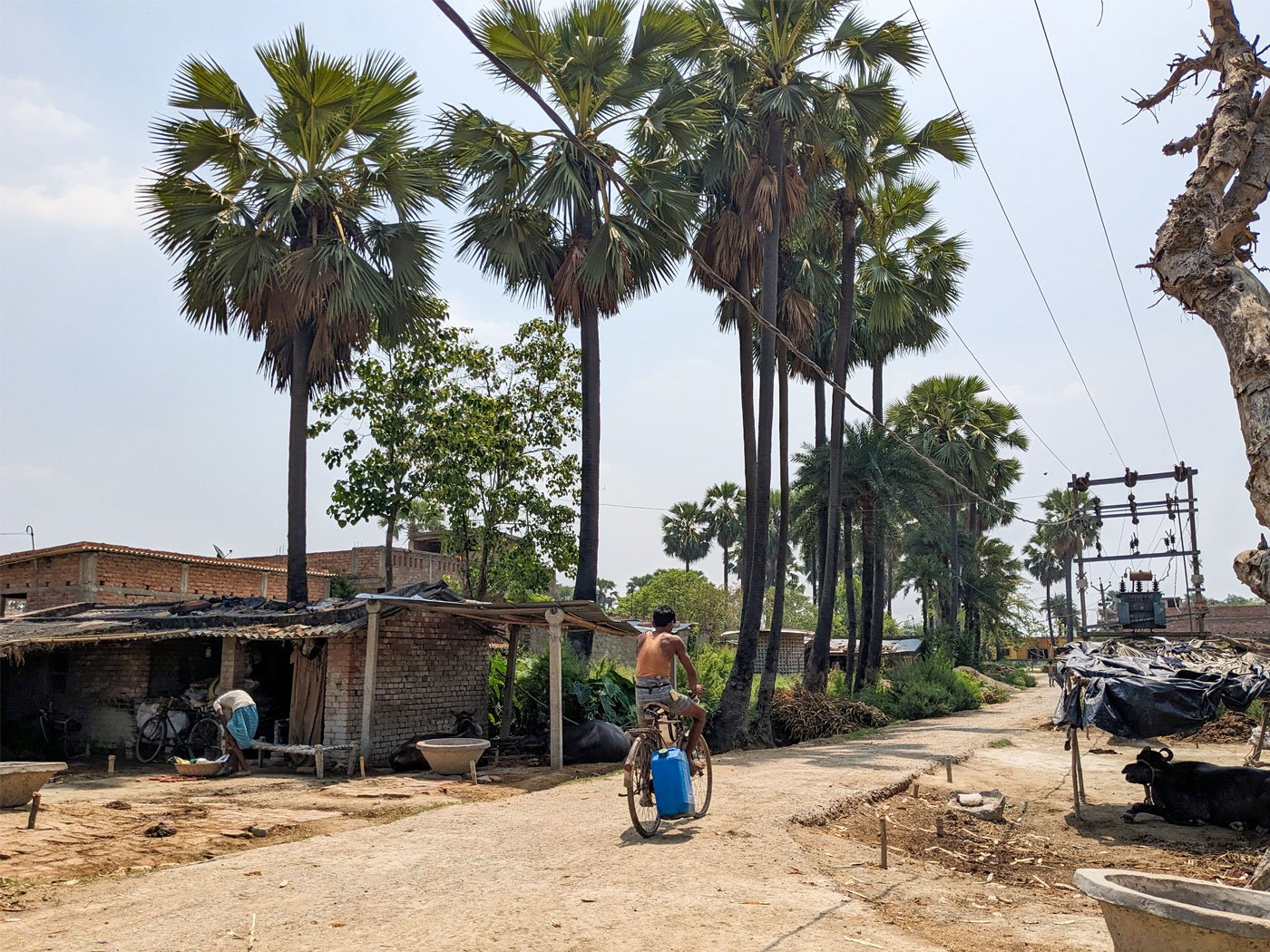
Left: Ajay sharpening the sickle with which he carves incisions. Right: Before his morning shift ends and the afternoon sun is glaring, Ajay will have climbed close to five palm trees
Ajay
has had a brief stint with city life – an unfulfilling one, he says. He had
migrated to Delhi and Surat a few years ago to work as a labourer on
construction sites. He would earn Rs. 200-250 a day, but, he says, “I didn't
feel like working there. Earnings were also less.”
He
is content with what he earns from tapping toddy.
This,
despite the fact that working with toddy involves the risk of police raids. The
Bihar Prohibition and
Excise Act, 2016
, allows no one to “manufacture, bottle, distribute,
transport, collect, store, possess, purchase, sell or consume” liquor and
intoxicants – including fermented toddy. The Bihar police have not raided
Rasulpur yet, but Ajay says, “Just because the police have not come here yet
does not mean that they never will.”
His fear stems from the false cases many allege the police have implicated them in. The police, he says, “might come anytime.”
Ajay
is ready to take these risks. “Here in Rasulpur, I get to live with my family,”
he says, rubbing
khaini
(tobacco) on
his palm.
Putting soil on the
fattha
(bamboo stick), Ajay sharpens his sickle on it. Readying his
tools, he makes his way towards another palm tree.
This story is supported by a fellowship in memory of a trade unionist from Bihar who championed the struggles of marginalised people in the state.
